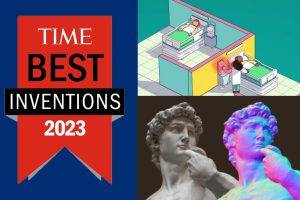
Two innovations associated with the Department of Computer Science earned spots on TIME’s Best Inventions of 2023 list. Each year, the magazine compiles a list of inventions that change and improve how we live, work, play, and think about what’s possible. Hundreds of nominations across categories such as apps and software, connectivity, design, and robotics are evaluated based on factors including efficiency, originality, and impact.
The Targeted Real-Time Early Warning System (TREWS) is a medical technology that uses artificial intelligence to predict the risk of sepsis before human clinicians can observe symptoms. It was developed by a team led by Suchi Saria, the John C. Malone Associate Professor of Computer Science. The system scours patient medical records, lab results, and symptoms to identify potential cases of sepsis. Studies indicate that when TREWS is used, patients are 20% less likely to die from sepsis. The technology was included in the magazine’s “Medical Care” category.
Neuralangelo, a revolutionary AI model that lets consumers turn 2D video into lifelike 3D replicas, was listed in the “Experimental” category. A joint project by researchers in the Whiting School of Engineering’s Department of Computer Science and tech giant NVIDIA, this high-fidelity neural surface reconstruction algorithm can precisely render the shapes of everyday objects, famous statues, familiar buildings, and entire environments from only a smartphone video or drone footage with no extra input necessary. The project was spearheaded by Zhaoshuo “Max” Li, MS ’19, PhD ’23, who worked with experts at NVIDIA and JHU advisors Russell Taylor, the John C. Malone Professor of Computer Science, and Mathias Unberath, an assistant professor of computer science, on the project.
Read the feature stories on TREWS and Neuralangelo.